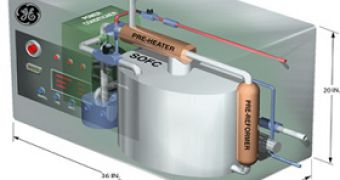Although present day notebooks have advanced a great deal when compared to their early counterparts, managing to reach performance levels that would definitely put to shame a two year old desktop computer, battery life is one area where things remained pretty much unchanged, but scientists at the Harvard School of Engineering and Applied Sciences are determined to change that since they recently announced some important advancements in fuel cell technology, making such a laptop a possibility.
Lead by Shiriram Ramanathan, the researchers have published a paper that details a new type of functional all-ceramic thin-film solid-oxide fuel cell (SOFCs) that is powered by methanol.
Impressive about this new fuel cell design is the fact that it manages to work without requiring platinum to be used in its construction, making fuel cells based on this technology a lot cheaper to produce.
Furthermore, by removing platinum, researchers have managed to improve the fuel cell's reliability, its temperature being also reduced , as a methane-fueled micro-SOFC cell is able to operate at under 500-degrees Celsius.
Although the temperature is still far to high for this to be used in notebooks and other portable devices, it comes as a huge improvement when compared to the 800C that typical SOFC cells operate at, the scientist working to get the temperature down to 300-degrees Celsius where they will be more appealing for use in mobile applications.
Important to note is also the fact that SOFC fuel cells use methanol as a fuel, as the hydrogen used by most other such designs has to be pure and is expensive to make, while methane is abundant and cheap.
Although it will definitely pass some time until we will see these types of fuel cells in everyday devices, the team is continuing to develop the technology, Ramanathan stating that future research “will explore new types of catalysts for methane SOFCs, with the goal of identifying affordable, earth-abundant materials that can help lower the operating temperature even further.” (via DailyTech)

 14 DAY TRIAL //
14 DAY TRIAL //